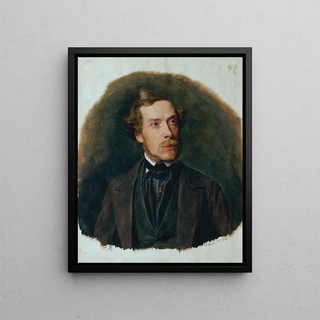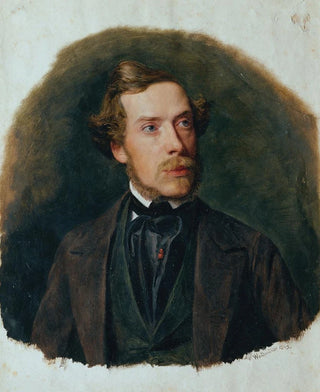Art print | Gustav Barth, choir director of the Vienna Men's Choir - Ferdinand Georg Waldmüller


View from behind

Frame (optional)
In the fascinating world of art, some works stand out for their ability to capture moments of life filled with emotion and truth. The art print of Gustav Barth, choir master of the Vienna Men's Choir - Ferdinand Georg Waldmüller is one of those pieces that transcend the simple frame to become a true window into an era. Waldmüller, master of Austrian realism, manages to immortalize not only the appearance of his subject but also the very essence of his character. This piece, both intimate and universal, invites us to dive into a world where music and art meet, revealing the passion and dedication of a choir master to his craft.
Style and uniqueness of the work
Waldmüller's style is characterized by striking realism, which is evident in every detail of this representation. The face of Gustav Barth, full of concentration and kindness, is surrounded by a soft light that highlights the features of his expression. The colors chosen by the artist, both warm and natural, enhance the feeling of authenticity. Waldmüller does not merely depict a choir master; he captures the soul of a man passionate about music and the human voice. The composition of the work, with a background that evokes the intimate setting of a rehearsal, immerses us in the vibrant atmosphere of a shared moment between the artist and his choristers. Every brushstroke seems to vibrate to the rhythm of musical harmonies, transforming this canvas into a true homage to choral art.
The artist and his influence
Ferdinand Georg Waldmüller is one of the emblematic figures of 19th-century Austrian realism. His artistic vision profoundly influenced his contemporaries and paved the way for new approaches in depicting everyday life. Waldmüller, through his works, sought to establish an emotional connection with the viewer, a characteristic that is reflected in the art print of Gustav Barth. By emphasizing human emotions and social interactions, he succeeded in making each painting a visual narrative.

Matte finish

View from behind

Frame (optional)
In the fascinating world of art, some works stand out for their ability to capture moments of life filled with emotion and truth. The art print of Gustav Barth, choir master of the Vienna Men's Choir - Ferdinand Georg Waldmüller is one of those pieces that transcend the simple frame to become a true window into an era. Waldmüller, master of Austrian realism, manages to immortalize not only the appearance of his subject but also the very essence of his character. This piece, both intimate and universal, invites us to dive into a world where music and art meet, revealing the passion and dedication of a choir master to his craft.
Style and uniqueness of the work
Waldmüller's style is characterized by striking realism, which is evident in every detail of this representation. The face of Gustav Barth, full of concentration and kindness, is surrounded by a soft light that highlights the features of his expression. The colors chosen by the artist, both warm and natural, enhance the feeling of authenticity. Waldmüller does not merely depict a choir master; he captures the soul of a man passionate about music and the human voice. The composition of the work, with a background that evokes the intimate setting of a rehearsal, immerses us in the vibrant atmosphere of a shared moment between the artist and his choristers. Every brushstroke seems to vibrate to the rhythm of musical harmonies, transforming this canvas into a true homage to choral art.
The artist and his influence
Ferdinand Georg Waldmüller is one of the emblematic figures of 19th-century Austrian realism. His artistic vision profoundly influenced his contemporaries and paved the way for new approaches in depicting everyday life. Waldmüller, through his works, sought to establish an emotional connection with the viewer, a characteristic that is reflected in the art print of Gustav Barth. By emphasizing human emotions and social interactions, he succeeded in making each painting a visual narrative.






